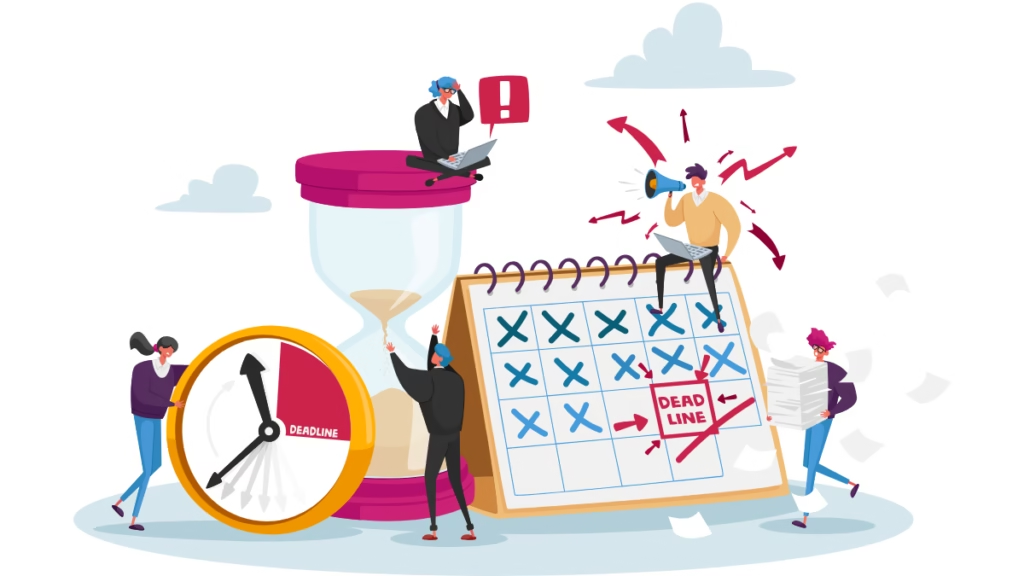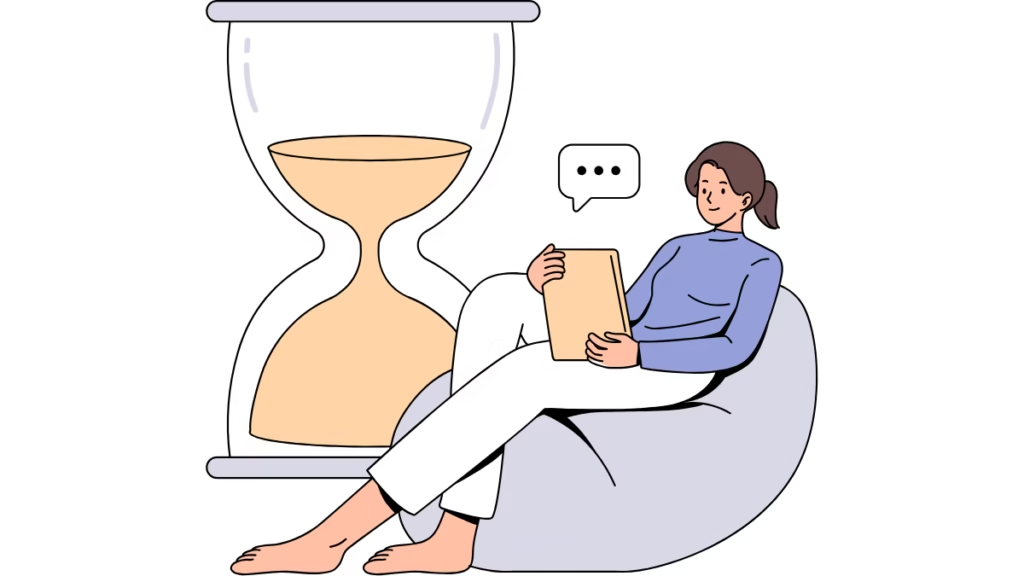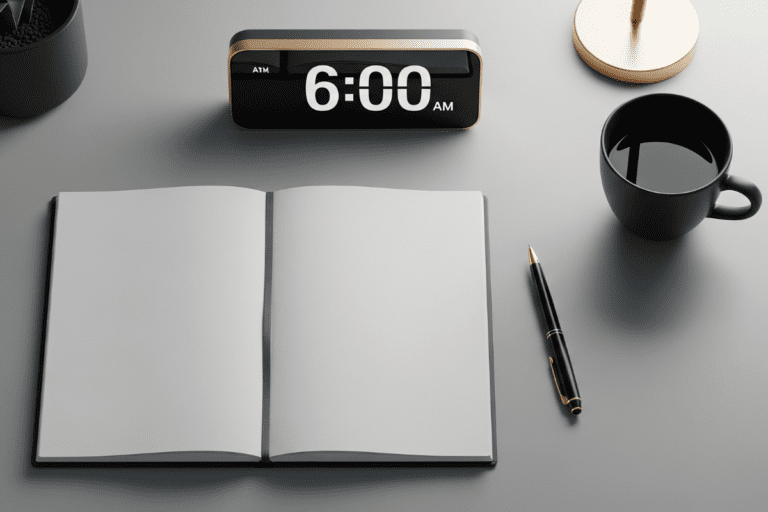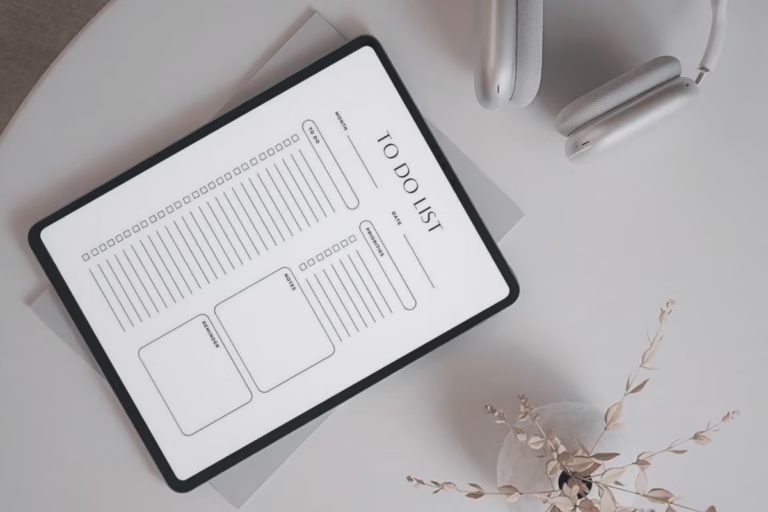Time Management for Creatives
Time management for creatives isn’t about doing more—it’s about protecting the work that matters.
You don’t need a tighter to-do list. You need a system built for how creatives actually function: one that balances structure with freedom, protects your focus, and sustains energy across long projects. Whether you’re trying to manage time as a creative professional or reclaim deep work hours for personal projects, the solution isn’t more hustle—it’s better design.
This guide offers a performance-based approach to creative time management. From focus systems to routine structure, you’ll learn how to build a rhythm that fuels output without sacrificing inspiration.
Because you don’t need more hours. You need structure that supports your art.
Let’s build it.


Why Time Management Feels Different for Creatives
Creative work doesn’t follow a factory model. It’s not about repeating the same task with mechanical precision—it’s about original output, emotional energy, and variable states of flow. That’s why traditional time management advice often fails creatives. It assumes consistency, when creative energy is anything but consistent.
The Balance Between Structure and Flow
Structure protects your time, but too much of it can choke your creativity. The key is finding a rhythm—one that offers enough guardrails to prevent distraction, without boxing in your ideas.
Block out your deep work windows. Let flow emerge inside the frame. Then design the rest of your day to support that.
Why Traditional Productivity Tools Often Fail Artists
Most systems reward task completion, not idea incubation. But creativity thrives in ambiguity—in wandering, exploring, and experimenting. Checklists don’t always account for this. That’s why high performers in creative fields build custom workflows instead of copying the latest productivity trend.
Creatives often need a hybrid method: task batching + flexible windows. Structure your inputs (admin, outreach, logistics), so your outputs (design, writing, coding) have space to breathe.
The Tension Between Passion Projects and Paid Work
Passion projects often have no deadlines, clients, or immediate payoffs. But they’re the reason you became a creative in the first place.
Don’t wait until your calendar is empty. Schedule your love projects like client work. Treat them with the same respect.
Block out two to three hours weekly—even if it’s early morning or late night. The ROI might not show up in dollars today, but it shapes your voice, portfolio, and fulfillment long term.


Core Principles of Time Management for Creatives
Great time management for creatives isn’t about squeezing more hours out of the day. It’s about protecting your best energy for your best work.
Protecting Focus Without Killing Inspiration
Distraction doesn’t just steal time. It steals depth.
If you want to enter a creative flow state, you need sustained, uninterrupted focus. But that doesn’t mean treating your day like a rigid checklist. Instead, create sacred windows—blocks of time where notifications are off, input is low, and your only job is to show up and create.
Your tools should support this. Use Notion to map your projects. Use Google Calendar to time block creative hours. But once inside those blocks, let inspiration lead.
Managing Energy, Not Just Hours
Time is a finite resource. Energy is a renewable one.
A deep work session demands more than just minutes—it demands stamina. That’s why tracking your energy is just as important as tracking your hours.
Start noticing when you feel most creative. Is it right after a workout? Late at night? First thing in the morning?
Design your day around those energy peaks. And plan recovery afterward.
Watch for Energy Hangovers
Some tasks drain you—even when they only take an hour. Client meetings, intense collaboration, or performance-heavy work can leave a lingering cognitive fog. If you ignore that and power through, your next creative block suffers.
Build buffers. Walk between projects. Listen to music. Create rituals to reset your mind. Having a strong evening routine can help you maintain your energy throughout the workday.
Momentum, Not Motivation
Motivation is inconsistent. Momentum is engineered.
Design your system to generate momentum:
- Use micro-milestones to show visible progress
- Start every day with a creative “warm-up task”
- End each work session by queuing up the next task
If you’re stuck in a creative slump, productive procrastination can actually become a strategic tool for progress. Small wins compound. And over time, they replace the need for motivation.
Creative Work Requires Space
Your brain needs more than output to perform. It needs inputs—reading, exploration, silence.
Block time for creative refueling:
- A weekly walk with no agenda
- Museum visits or film screenings
- Time to play, sketch, ideate
Without these inputs, your work becomes derivative. With them, it stays original.


Practical Time Management Strategies That Work
Now that we’ve covered the principles, let’s break down the systems that actually work for creatives.
Time Blocking for Creative Projects
Time-blocking gives your ideas a container.
- Morning: Deep work on your passion project
- Afternoon: Paid work, client calls, emails
- Evening: Inspiration, recovery, or review
Not sure whether to use structured blocks or open-ended lists? This guide compares time blocking vs. to-do lists so you can choose the best fit. You can also combine time blocking with the Eisenhower Matrix to prioritize your tasks.
When you know what each hour is for, context-switching drops—and your mind stays engaged.
The 3-Hour Focus Window
You don’t need 12 hours. You need three good ones.
Most creatives peak in short, high-focus bursts. Three hours a day of deep work, over time, can outperform all-nighters and chaotic sprints.
But those three hours must be protected. Schedule them. Prepare for them. Turn your environment into a signal that it’s time to perform.
Chunking Big Tasks into Micro-Milestones
Instead of writing “Design new website,” try:
- Choose homepage template
- Write 3 headlines
- Create draft layout in Figma
Break everything into 30–60 minute blocks. It makes the impossible feel actionable.
Task Batching and Thematic Days
Batching is essential for flow.
Creative work is fragile. It shatters under the weight of admin interruptions.
Choose one or two admin windows per week. Process emails, invoices, planning, and comms all at once.
You can also use thematic days:
- Monday: Planning + admin
- Tuesday–Thursday: Deep work + client projects
- Friday: Review + exploration
Track How Long Tasks Actually Take
Creatives often underestimate task time. That creates stress, spillover, and self-blame.
Audit yourself:
- Track every 30 minutes for 3–5 days
- Identify your time sinks
- Notice what drains you, what energizes you, and what’s neutral
Then refine. Shorten or cut the tasks that don’t deliver value.


Building a Personal Workflow That Lasts
If you’re ready to turn creative bursts into a dependable rhythm, start by crafting a routine that supports deep focus, energy alignment, and sustainability. Time management isn’t a one-time setup. It’s a living system.
Designing Around Your Creative Peak Hours
Don’t fight your nature. If your brain turns on at 10 PM, stop trying to do deep work at 6 AM.
Use your chronotype to your advantage. High performers don’t force routines—they design around energy.
Weekly Reviews and Reset Rituals
At the end of each week:
- Review what worked
- Identify what drained you
- Reset your tools and calendar for the next cycle
This simple practice builds self-awareness—and lets your system evolve with you.
Creating Recovery Space (to Avoid Burnout)
Burnout isn’t always loud. Sometimes it’s just… dullness.
You stop caring. Your work loses its edge. Your motivation dries up.
Build recovery into your workflow:
- Midday walks
- Digital sabbaths
- No-commitment weekends
Creativity thrives on space. Protect it.
Separate Passion Projects From Work Projects
Don’t let your love work get buried beneath deadlines.
Create separate folders, calendars, even environments for each. Your brain associates context with task—use that to your advantage.
Tools, Techniques, and Systems to Support You
The tools don’t matter unless they support the system. Choose ones that fit your rhythm.
Calendar Apps, Notion, and Analog Tools
- Google Calendar: Time-blocking and visibility
- Notion: Idea vaults, project tracking, notes
- Analog tools: Notebooks or post-its for tactile thinkers
Use digital for structure and use analog for inspiration.
Eisenhower Matrix for Prioritization
This tool isn’t just for execs. Creatives often mistake urgency for importance. The Eisenhower Matrix clarifies:
- Urgent + Important: Do now
- Important + Not Urgent: Block time
- Urgent + Not Important: Delegate or batch
- Neither: Eliminate
Performance Identity and Internal Standards
When no one’s watching, your standards are the only thing holding you accountable.
Your performance identity is how you show up when there’s no external pressure. Build it like a character:
- What do they prioritize?
- How do they start their day?
- What do they protect at all costs?
Rehearse that identity until it becomes natural.


Final Thoughts: Structure Protects Your Art
Creativity doesn’t flourish in chaos—it flourishes in space. You don’t need more hours. Instead, you need better design.
Time Management for Creatives Starts with Better Design
Protect your flow. Schedule your passion. Track your energy.
The goal isn’t perfection. It’s sustainability. Over time, a personal workflow becomes your greatest creative asset.
Start Small, Refine Weekly
- Choose one creative block per day
- Track time for three days
- Schedule one weekly review
Then improve, protect, and perform.
Because time management for creatives isn’t about restriction. It’s about elevation.
Common Questions
u003cbr/u003eu003cstrongu003eWhat is the best time management system for creatives?u003c/strongu003e
u003cbr/u003eThe best time management system for creatives blends structure with flexibility. Unlike rigid productivity methods, creative workflows thrive on u003cstrongu003etime blockingu003c/strongu003e, u003cstrongu003eenergy trackingu003c/strongu003e, and u003cstrongu003emicro-milestonesu003c/strongu003e that respect inspiration and output rhythms. Systems like Notion, the Eisenhower Matrix, and thematic days work well when customized.
u003cbr/u003eu003cstrongu003eHow can I manage my time better as a creative person?u003c/strongu003e
u003cbr/u003eStart by designing your schedule around your u003cstrongu003ecreative energy peaksu003c/strongu003e, not just available hours. Use time-blocking to protect deep work, batch admin tasks to avoid interruptions, and build in space for rest and inspiration. u003cstrongu003eTime management for creativesu003c/strongu003e isn’t about cramming more in—it’s about focusing on what matters most.
u003cbr/u003eu003cstrongu003eWhy does traditional time management fail for creatives?u003c/strongu003e
u003cbr/u003eTraditional systems prioritize efficiency and repetition, while creative work is nonlinear, emotional, and energy-dependent. That’s why creatives often struggle with rigid to-do lists. A custom, performance-based routine that includes recovery, exploration, and focus blocks is far more effective.
u003cbr/u003eu003cstrongu003eHow do I avoid burnout while managing time as a creative?u003c/strongu003e
u003cbr/u003eAvoid burnout by managing energy, not just hours. Build recovery rituals—like midday walks, digital breaks, or weekly reviews—and give yourself space for creative inputs like reading, sketching, or nature. A sustainable workflow prevents burnout by maintaining momentum without overloading output.
u003cbr/u003eu003cstrongu003eWhat are common time management mistakes creative professionals make?u003c/strongu003e
u003cbr/u003eCommon mistakes include:u003cbr/u003eu003cbr/u003eTrying to copy rigid routines instead of designing their ownu003cbr/u003eIgnoring energy levels when scheduling tasksu003cbr/u003eLetting admin work interrupt deep focus windowsu003cbr/u003eNot scheduling passion projects with the same priority as paid worku003cbr/u003eu003cbr/u003eDesigning a u003cstrongu003epersonal workflowu003c/strongu003e solves these by aligning time with what matters most.





